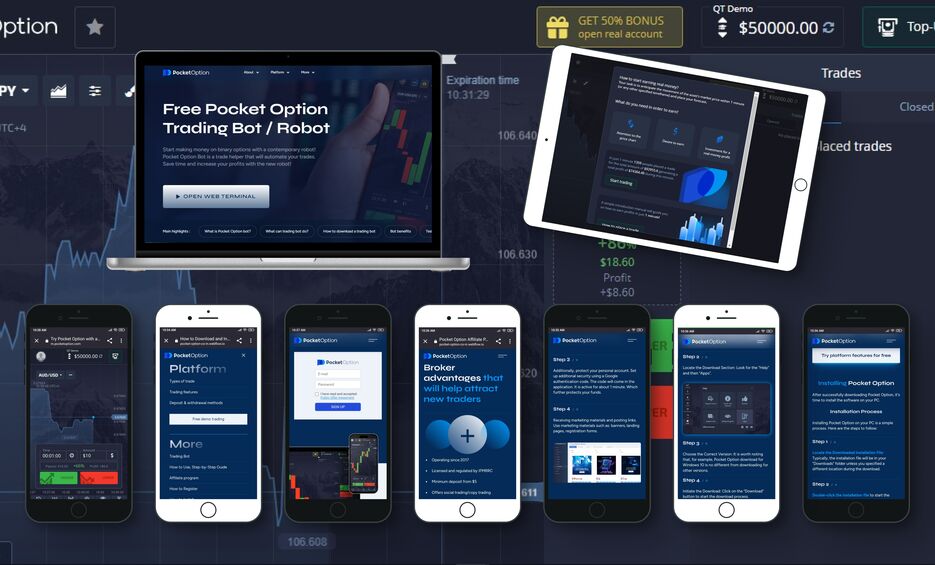
Understanding Indicators Pocket Option: Your Guide to Success
Trading in the financial markets has become increasingly popular, and for many, platforms like Pocket Option provide the tools necessary for effective trading strategies. A crucial component of trading is understanding indicators, and if you want to learn more about the various Indicators Pocket Option Pocket Option indicators available, you’ve come to the right place.
What are Indicators?
Indicators are mathematical calculations based on the price, volume, or open interest of a security. They provide traders with valuable insights into market trends and can be pivotal in making informed trading decisions. Within the context of Pocket Option, indicators serve the purpose of helping traders identify potential entry and exit points and evaluate the overall market sentiment.
Types of Indicators in Pocket Option
Pocket Option offers a variety of indicators that cater to different trading styles and needs. Understanding the key types of indicators can be immensely beneficial for any trader. Here are some of the most notable categories:
1. Trend Indicators
Trend indicators are designed to help traders identify the direction of the market. They are essential for recognizing whether the market is trending upwards, downwards, or moving sideways. Some popular trend indicators include:

- Moving Averages: This indicator smoothes out price data to create a trend-following indicator. It can help traders understand the general direction of the market.
- MACD (Moving Average Convergence Divergence): A momentum indicator that shows the relationship between two moving averages of a security’s price. It can provide signals for potential reversals.
2. Momentum Indicators
Momentum indicators measure the rate at which the price of an asset changes. They help traders identify the strength of a trend and can indicate potential reversals. Some commonly used momentum indicators in Pocket Option include:
- Relative Strength Index (RSI): This indicator measures the speed and change of price movements. It ranges from 0 to 100 and is typically used to identify overbought or oversold conditions.
- Stochastic Oscillator: This indicator compares a particular closing price of an asset to a range of its prices over a specific period. It helps traders identify momentum changes.
3. Volatility Indicators
Volatility indicators help traders understand how much the price of a security fluctuates. These indicators are crucial for assessing risk and potential price movements in the market. Notable volatility indicators include:
- Bollinger Bands: This indicator consists of a middle band (moving average) and two outer bands. The outer bands expand and contract based on market volatility.
- Average True Range (ATR): ATR measures market volatility by decomposing the entire range of an asset for that period. A higher ATR indicates more volatility.
4. Volume Indicators
Volume indicators provide insights into the trading volume of an asset, which can be crucial for confirming trends and reversals. Some popular volume indicators include:

- Volume Profile: This indicator shows the amount of volume traded at specific price levels, helping traders understand where most trading activity has occurred.
- On-Balance Volume (OBV): A cumulative volume indicator that adds volume on up days and subtracts it on down days, indicating the direction of buying and selling pressure.
How to Use Indicators Effectively
While indicators can provide immense value, it is essential to understand how to use them effectively. Here are some tips for traders using Pocket Option indicators:
- Combine Multiple Indicators: Relying on a single indicator may lead to misleading signals. Combine different types of indicators (trend, momentum, volatility, volume) to get a clearer picture of market conditions.
- Practice with a Demo Account: Before committing real funds, utilize a demo account to practice using indicators and refine your trading strategies without financial risk.
- Backtest Your Strategies: Historical data can provide insights into how an indicator might perform under various market conditions. Backtesting can help validate your strategies before live trading.
- Stay Informed: Markets are influenced by countless factors. Staying updated on economic news, market events, and changes in sentiment can help you better interpret the signals provided by indicators.
Common Mistakes to Avoid
Despite their potential, many traders make common mistakes when using indicators. Here are a few pitfalls to watch out for:
- Over-Reliance on Indicators: Some traders rely solely on indicators without considering broader market context or news events. Always take a holistic approach to trading.
- Ignoring Time Frames: Indicators can behave differently on various time frames. Ensure you analyze indicators across multiple time frames to confirm signals.
- Failure to Adapt: The market is constantly changing. Indicators that worked in one market condition may not be appropriate in another. Adapt your strategies accordingly.
Conclusion
Indicators play a pivotal role in trading on the Pocket Option platform. They can provide valuable insights into market trends, momentum, volatility, and volume, enabling traders to make informed decisions. By understanding the types of indicators available, utilizing them effectively, and avoiding common mistakes, traders can enhance their trading experience and improve their chances of success. As with all aspects of trading, continuous learning and adaptation are key to thriving in the ever-evolving financial markets.